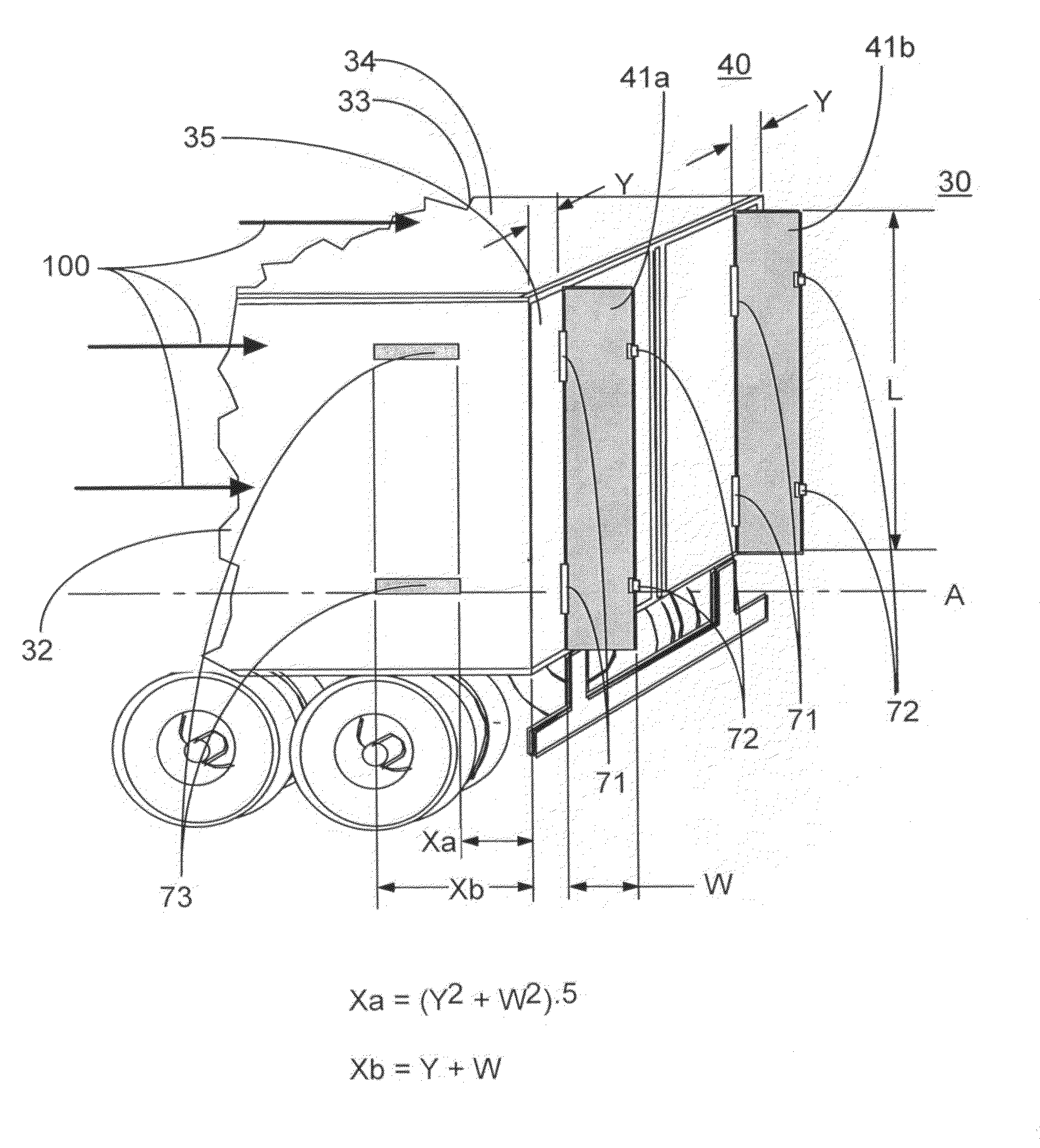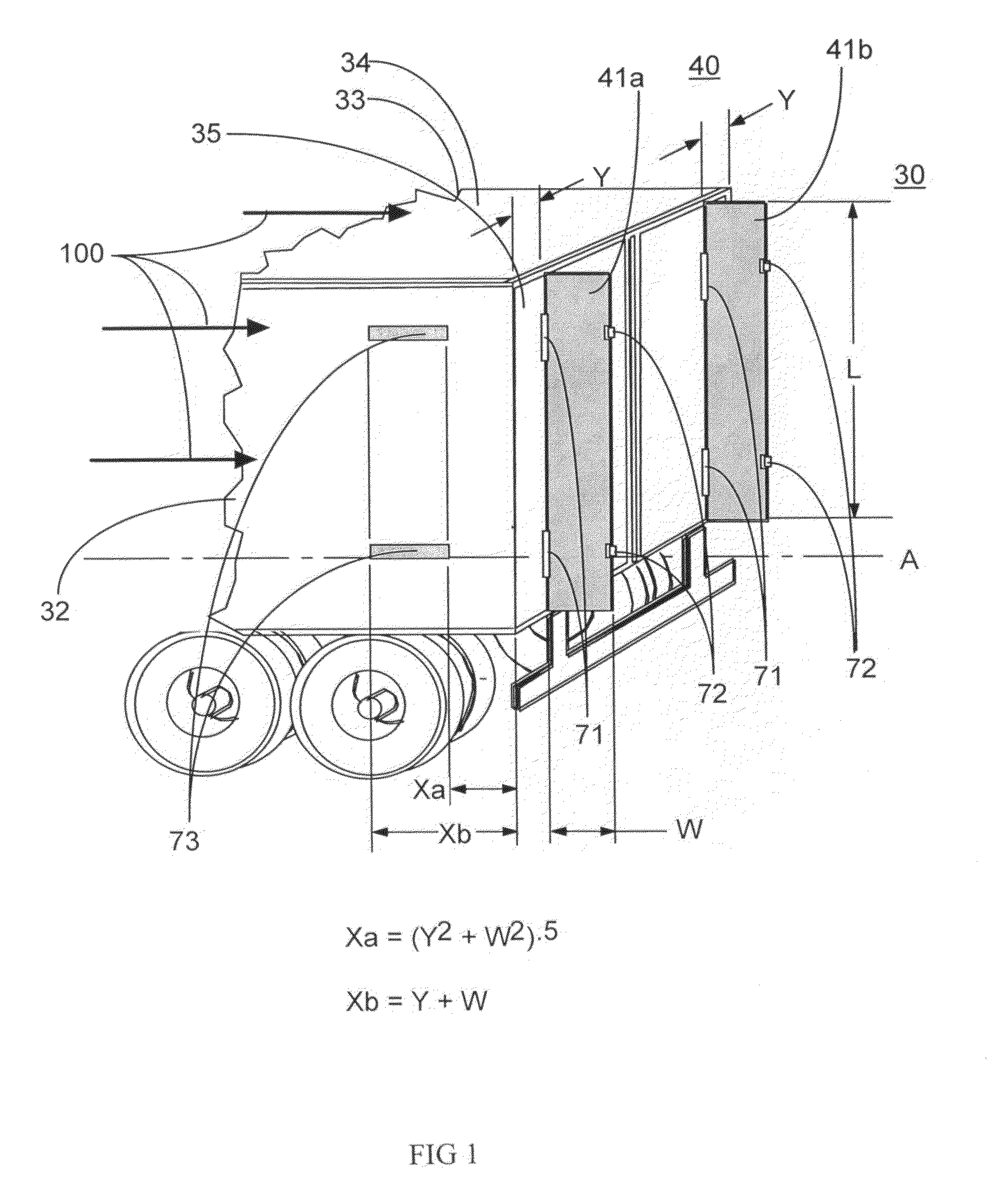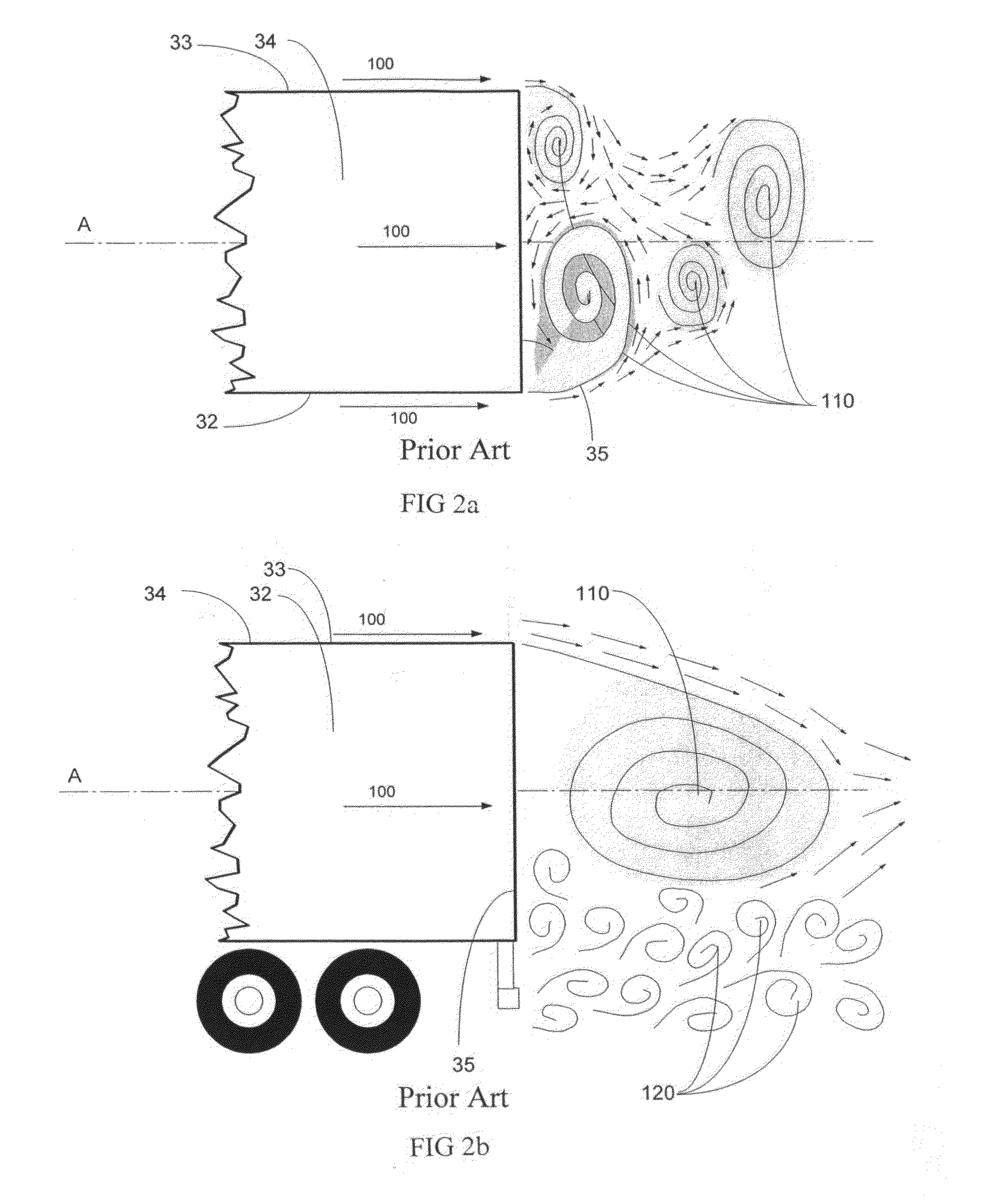Wake stabilization device and method for reducing the aerodynamic drag of ground vehicles
a stabilization device and ground vehicle technology, applied in vehicle arrangements, roofs, transportation and packaging, etc., can solve the problems of unsteady and dynamic wake flow, inability to energize and and inability to stabilize low energy flow at trailing edges of side surfaces. , to achieve the effect of minimizing aerodynamic drag, improving vehicle operation, and being convenient and convenient to us
- Summary
- Abstract
- Description
- Claims
- Application Information
AI Technical Summary
Benefits of technology
Problems solved by technology
Method used
Image
Examples
Embodiment Construction
[0059]The following descriptions are of exemplary embodiments of the invention only, and are not intended to limit the scope, applicability or configuration of the invention in any way. Rather the following description is intended to provide a convenient illustration for implementing various embodiments of the invention. As will become apparent, various changes may be made in the function and arrangement of the elements described herein without departing from the spirit and scope of the invention. For example, though not specifically described, many shapes, widths, leading edge shapes, spacing and orientation of the forward extended plurality of panels, candidate vehicles that can benefit from the device, fabrication means and material, attachments means and material should be understood to fall within the scope of the present invention.
[0060]Referring now in detail to the drawings, like numerals herein designate like numbered parts in the figures.
[0061]FIG. 1 is a rear perspective ...
PUM
 Login to View More
Login to View More Abstract
Description
Claims
Application Information
 Login to View More
Login to View More - R&D
- Intellectual Property
- Life Sciences
- Materials
- Tech Scout
- Unparalleled Data Quality
- Higher Quality Content
- 60% Fewer Hallucinations
Browse by: Latest US Patents, China's latest patents, Technical Efficacy Thesaurus, Application Domain, Technology Topic, Popular Technical Reports.
© 2025 PatSnap. All rights reserved.Legal|Privacy policy|Modern Slavery Act Transparency Statement|Sitemap|About US| Contact US: help@patsnap.com



